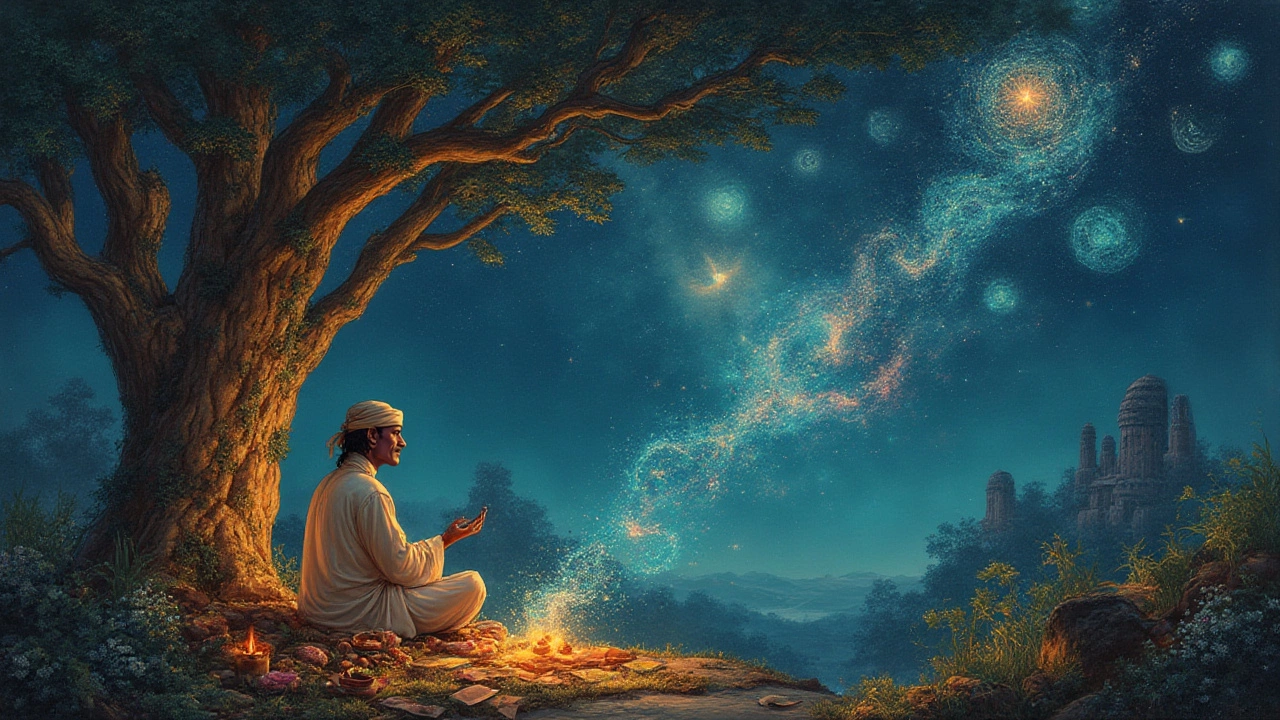
Indian Philosophy of Dreams: Ancient Wisdom, Myths, and Modern Interpretations
Dive into Indian philosophy of dreams—how ancient texts, spiritual practices, and cultural beliefs explain what dreams mean, why we have them, and how to use them.
Ever wondered why you remember some dreams and forget others? In India, dreams have been treated like messages from the divine for thousands of years. From the Vedas to the Upanishads, scholars tried to decode what a dream really means. Let’s break down the main ideas in plain language, so you can see how they fit into today’s life.
In the earliest Vedic texts, a dream is more than random brain activity. It’s a sign that the gods send to guide or warn us. The Rig Veda mentions svapna (sleep) as a state where you receive divine knowledge. If a dream shows a fire, it often hints at purification or a coming celebration. If you see a snake, the ancient sages linked it to hidden fears or upcoming challenges.
One practical tip from this tradition: keep a notebook by your bed. Write down symbols as soon as you wake up. Over time you’ll spot patterns – maybe water shows up when you’re about to make a big decision, or birds appear when you’re feeling free. The Vedic view says these patterns are clues from the universe, not just random thoughts.
Buddhism shifts the focus from gods to the mind itself. The Satipatthana Sutta teaches that watching your dreams can help you see how attachments and cravings work. If you dream of losing something valuable, it points to a deep-seated fear of loss in waking life. The goal isn’t to predict the future but to recognize the mental habits that cause suffering.
In practice, Buddhist monks use a technique called “dream yoga.” Before sleep they set an intention like, “I will notice that I am dreaming.” When the dream happens, they try to stay aware, turning the dream into a meditation space. You can try it too: repeat a simple phrase before bed, such as “I will stay aware,” and see if you become lucid.
Later Hindu texts like the Mahabharata and the Shiva Purana expand on symbols. A dream about a cow can mean prosperity if you’re a farmer, but it might signal a need for nurturing if you’re in a stressful job. The key is personal context – the same symbol can mean different things for different people.
Modern readers often use a “symbol dictionary,” but the ancient advice is to combine that with self‑reflection. Ask yourself, “What’s happening in my life right now?” If you’re preparing for an exam and dream of books falling, it’s likely your stress showing up.
1. Record immediately: Keep a diary by your pillow and jot down every detail, even the feelings.
2. Identify recurring symbols: Look for images that pop up more than once.
3. Link to life events: Match symbols with current challenges or joys.
4. Apply Vedic or Buddhist lenses: Ask if the symbol feels like a warning (Vedic) or a reflection of inner habits (Buddhist).
5. Test lucid intention: Try the “dream yoga” phrase for a week and see if you become aware inside the dream.
When you treat dreams as useful information rather than random fluff, you’ll notice a shift in self‑awareness. The ancient Indian approach teaches that every night is a chance to learn something new about yourself and the world around you.
So next time you wake up with a vivid scene, don’t scroll past it. Write it down, think about what’s going on in your life, and see if the old Indian wisdom can give you a fresh perspective.

Dive into Indian philosophy of dreams—how ancient texts, spiritual practices, and cultural beliefs explain what dreams mean, why we have them, and how to use them.